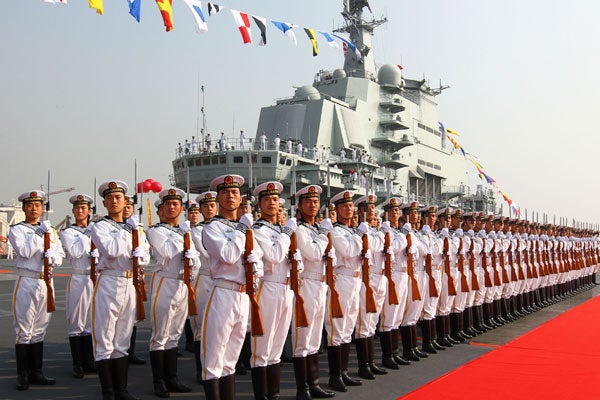China appears increasingly willing to escalate tensions along its periphery as it asserts its claims over various disputed islands and shoals.
Japanese Prime Minister Shinzo Abe recently compared Sino–Japanese relations to 1914, suggesting not only that tensions are on the rise but that there is a real potential for conflict. Yet in the East China Sea, both China and Japan have thus far kept their respective militaries largely away from the disputed Senkaku islands.
However, the situation is far more dangerous in the South China Sea. Not only are there far more claimants, leading to a much more complex situation, but the Chinese have been more willing to employ military force (as opposed to civilian law enforcement vessels generally used) to support their claims. This past week, the Chinese dispatched the Type 052B destroyer Wuhan, the Type 052C destroyer Haikou, and the amphibious ship Changbaishan to James Shoal near the southern extreme of Chinese-claimed waters.
This follows a similar military sortie in March 2013, when five Chinese naval combatants patrolled the waters around the same shoal. That patrol was unprecedented. As one analyst noted at the time, “We’ve never seen anything like this that far south in terms of quantity or quality.”
Under the circumstances, it is understandable that Malaysia, which also claims James Shoal, is reportedly establishing a new navy and marine base at Bintulu, less than 100 miles from the disputed island, after last year’s Chinese appearance.
This recent Chinese deployment also occurs in the wake of a near collision between the U.S. cruiser USS Cowpens and a Chinese amphibious ship in the South China Sea. The Chinese claimed that the U.S. ship was operating too close to Chinese vessels—at a distance of 60 miles.
One can only hope that the Chinese, longtime students of history, understand the risks that they are courting as they begin to employ military means to underscore their territorial claims a century after the outbreak of World War I.
